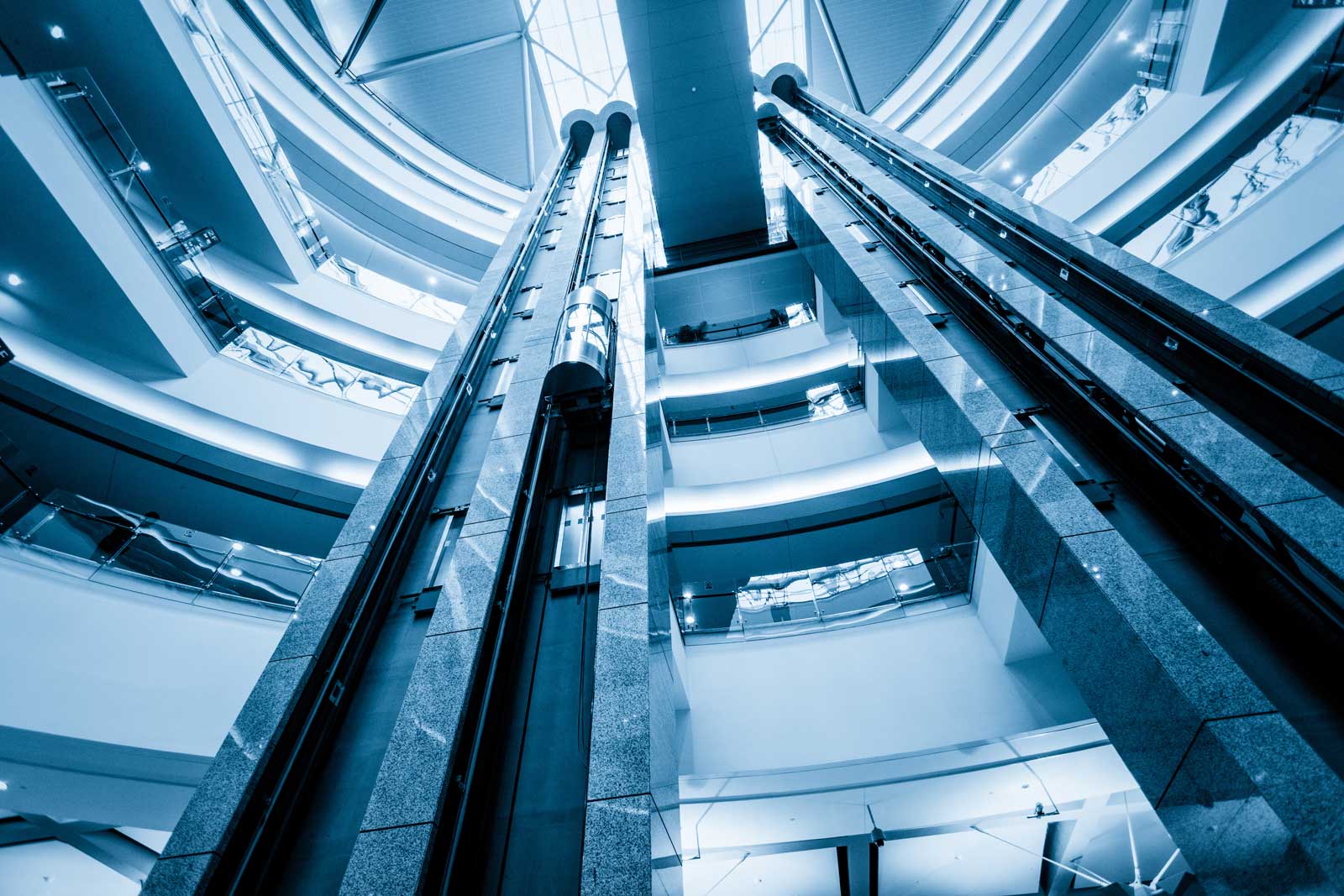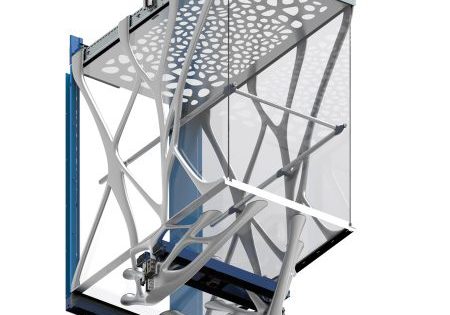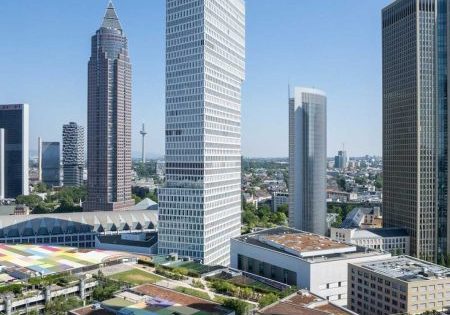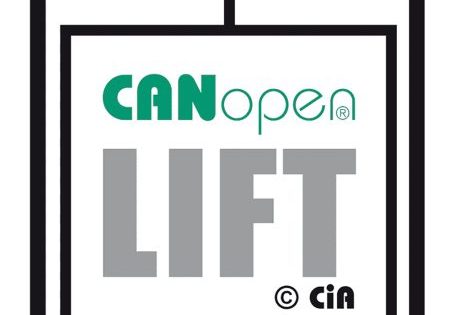Top trends boosting industry demand through 2027
submitted by Graphical Research
According to a recent study from market research firm Graphical Research, the global elevator market size is poised to expand at a substantial CAGR (compound annual growth rate) during the forecast period. In the aftermath of the COVID-19 pandemic, the global construction industry is expected to see a rising curve, facilitating the development of skyscrapers and high-rise buildings throughout the world. Robust urbanization is one of the crucial drivers of the elevator industry, with speedy industrialization being another key catalyst.
Elevators are primarily utilized across commercial and industrial facilities, as well as across mid-rise and high-rise residential buildings. While in residential buildings individuals use small home elevators for ascending or descending from floor to floor, elevators play a vital role in industrial units by transporting people and goods vertically across storage plants, production units and warehouses.
The following seven vital factors are certain to have a positive impact on the global elevator industry forecast through 2027:
Demand for Hydraulic and Pneumatic Elevators in North America
During the forecast timeline, the demand for hydraulic and pneumatic elevators is expected to remain aloft due to their suitability for low-rise applications. These elevators ensure cost efficiency as they require minimal upfront charges. When compared with traction elevators, this type of equipment demands lower maintenance costs, as well.
Due to the ability to transport larger weights, their adoption across industrial facilities and residential complexes has increased considerably over the last few years. The hydraulic and pneumatic elevator market share in North America is estimated to account for more than 30% of the total regional revenue through 2027.
North America Sees Consistent Deployment of MR Traction Elevators
North America is known to have a construction sector highly focused on and capable of developing skyscrapers and high-rise residential buildings. Machine-room (MR) traction elevators are quite suited to these structures, owing to their speed and the height covered. They perform better than hydraulic and pneumatic elevators across such buildings.
Consistent spending in the private sector to build mid- to high-rise structures will foster the North American MR traction elevators market. Reportedly, the private sector in North America was responsible for nearly US$1 trillion in construction spending during 2020.
Growing Residential Adoption in the Asia-Pacific
The Asia-Pacific (APAC) elevator industry outlook presents a thriving landscape thanks to the presence of a robust construction sector in the region. India, Japan, Indonesia, Malaysia, China and Singapore are set to contribute considerably to overall demand for these products. growth is most prominent across the residential sector of developing economies, due to the presence of favorable government policies that are focusing on residential infrastructure development.
With several new government projects aiming to provide affordable housing to the regional population, APAC elevator market share is anticipated to jump at a notable pace over the next six years. The market share from the residential construction segment is projected to observe a growth of more than 3.3% CAGR through the assessment timeline, supported by the upcoming smart city plans in the region.
In the aftermath of the COVID-19 pandemic, the global construction industry is expected to see a rising curve, facilitating the development of skyscrapers and high-rise buildings throughout the world.
Growing Burden of Maintenance and Repair Across Asia
Aging lifts and elevators entail considerable expenses for repair jobs and maintenance across Asian economies. New Zealand, Japan, Australia, Singapore and Hong Kong SAR, particularly, are witnessing a surge in demand for maintenance of older elevators. This is encouraging the commercial and residential sectors to adopt newer, advanced elevators that are efficient and require minimum maintenance.
Although the COVID-19 pandemic acted as a major disruptor for the APAC elevator market forecast, the emergence of new products is likely to generate fresh revenue. The construction sector is exhibiting considerable resilience despite the damaging blow. The region-wide COVID-19 vaccination drives are likely to enable further product manufacturing in Asia.
Overseas Contracted- Projects Across China
China’s elevator market size accounted for more than 70% of the total regional revenue during 2020 and might continue to retain its lead through 2027. The growing volume of infrastructure investments and the relaxation of real estate regulatory policies is driving the deployment of new lifts and elevators.
Owing to the rising number of overseas contracted projects across the nation, the APAC elevator industry is certain to flourish. As per the records of the Chinese Ministry of Commerce, in 2019, turnover of the nation’s overseas contracted projects amounted to over 1192.75 billion yuan, increasing by 6.6% from the previous year.
Aftersales Services Across Developed European Nations
By 2027, Europe’s elevator industry size is estimated to reach US$13 billion, triggered by the growing number of high-rise buildings across the region. New construction projects are incorporating new and advanced elevators and escalators across Germany, Russia, France, Spain and the U.K.
Although the matured construction market might hinder new product installation, the demand for aftersales, repair and maintenance is likely to rise across the more developed countries. The large number of migrants, coupled with the rising emphasis on sustainability, is driving European elevator market trends.
MRL Elevators in European – Industrial Units
The industry share from machine room-less (MRL) traction elevators in Europe is expected to record a 2.3% CAGR through the coming years, fostered by their growing adoption across industrial facilities. Industrial buildings generally face space shortages. As these elevators lack a separate machine room, they require considerably less space than standard elevators. This makes them an ideal choice for industrial use.
MRL traction elevators can travel at up to 500 ft/min, covering more than 250 ft at a time. These elevators offer higher energy efficiency when compared with MR traction elevators, although their installation and maintenance costs are somewhat similar. Europe elevator market share is expected to gain traction due to the high reliability, low maintenance, less space requirements and improved energy efficiency of MRL elevators.
Graphical Research (powered by Global Market Insights) provides a large collection of market research and industry analysis reports covering many sectors across diverse regions like North America, Europe, Asia Pacific, Latin America and others. The comprehensive reports are aligned with the key industry trends and insights in specific regional markets.
Get more of Elevator World. Sign up for our free e-newsletter.










